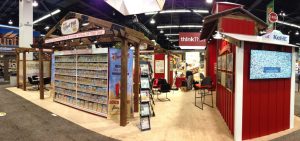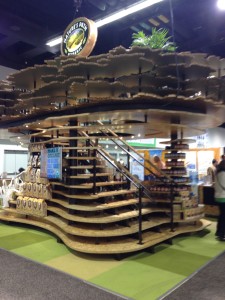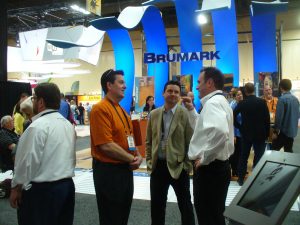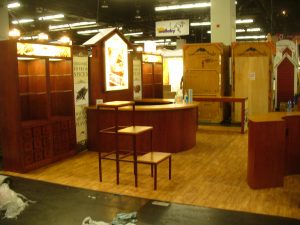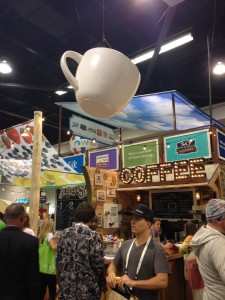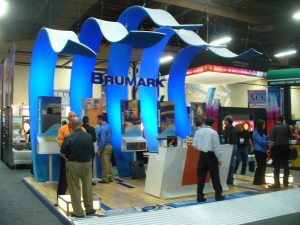7 Tradeshow Exhibit “Must-Haves”
Time for another list – this one is called 7 tradeshow exhibit “must-haves” and it’s pretty simple. What 7 things (items, people, plans) are essential to making your next tradeshow appearance a whopping success? Let’s count them:
- Branding that is clear as an angel’s giggle. A visitor should know at a glance what you sell and what kind of a company you are. She should be able to intuit so much with that glance: how you approach the marketplace, how the company culture works, how you view the environment, wha

t kind of company you are. A good 3D exhibit designer working with a knowledgeable and responsive marketing team can work magic with the right design.
- Professionalism that is as obvious as, well, Captain Obvious. Your fully-trained staff will know how to approach visitors in a friendly and engaging way, and how to either answer their questions or get them to the right person. Staff training goes a long way and is worth more than you’ll ever spend on it.
- Lead capture system as effective and smooth as a glass of fifty-dollar bourbon. Once you have a prospect in your sights, make the transition from visitor to prospect so easy when gathering contact and follow-up information that they’ll barely know it’s happening.
- Interactivity that engages and draws a crowd. Okay, not every activity can draw a crowd at all times. But what if you had something in your booth that was interesting and engaging enough that once a few people got going, it attracted other people? And if that activity was directly related to your product or service, wouldn’t that be about the best you could do? Well, you could top that by making sure you were gathering contact and follow-up information from as many of those people as you could, once you qualified them.
- A comprehensive tradeshow marketing plan that covers months leading up to the show, through the show, and through the follow-up period. This would mean pre-show marketing, show execution and immediate follow-up with the hottest prospects.
- Enough STUFF: business cards, lead sheets, sell sheets, samples, demos – all of the stuff you need to hand out to visitors, show they what you do and so on. Take more than you think you’ll need. Unless its dated, you can always repack it and use it next time.
- Comfortable shoes. Ha! You saw this one coming, didn’t you?
Free Report: “7 Questions You’ll Never Ask Your Exhibit House”


